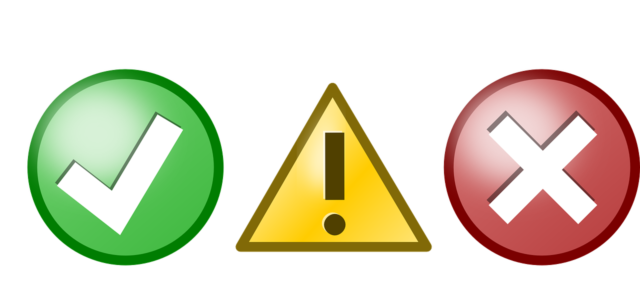As I read yet another very vocal complaint about OTAs from another activity operator in one of the many social groups that we small independent operators hang out in it struck me that many operators in the tours and activities sectors do not really understand what OTAs are and what they are trying to do.
Therefore I thought I would pen some thoughts to try and help Operators in the Tours and Activities industry understand the OTA business model.
What are OTAs?
It is critical to understand what OTAs are and how they operate and what their objectives are. I spent a long time in the military, and we put much effort into understanding how our friendly forces conducted operations and even more effort into how our enemies operated.
I am not saying OTAs are either friends or enemies. They are both at the same time, which, although confusing it makes it even more important to understand them and their business models from their point of view.
OTAs without exception work a variation of Aggregation. Aggregation describes how OTAs platforms come to dominate the travel industry systematically and predictably. Aggregation should be understood by anyone in our industry who is ambitious enough to build a platform business and if you are ambitious enough I recommend you do and quickly as it is going to get harder.
However, critically, everyone in our industry that platform businesses impact has to understand what the platform endgame is and how a small number of OTA platforms will control distribution. So even as a small operator in Tours and Activities with no ambition to be anything more than a small fantastic operator giving guests great experiences you still need to understand this!
Before we progress, it is essential to understand where we currently are in the market. We have been the forgotten part of travel for decades but no longer. Our sector in its sights of existing technology companies and an endless amount of technology startups.
The value chain for the Tours and Activities market has three parts: Operators, Distributors, and of course Customers. Those that want to make huge profits from the $180 Billion Tours and Activities market need to do one of two things and maybe a third?
- Option 1, Gain a horizontal monopoly in one of the three parts of Operators, Distributors, or Customers.
- Option 2, Integrate two of the three. For example, customers and distribution will result in giving a platform a competitive advantage by delivering a vertical solution.
- Option 3, Integrate all three ( so far no one has attempted this at scale but it will happen)
I am privileged enough to have been involved in internet-driven businesses since the late 1990s and exclusively in tours and activities since 2003. From an operations perspective, I guided my first tours and expeditions in the 1980s so apart from exposing I may be an old fool my point is I have been lucky enough to live through a lot of change in the sector and the change we are seeing now is the most disruptive I have experienced.
No longer do the distributors in Tours and Activities compete by having exclusive operator relationships. What was once a strategic advantage has gone. Today the customer is the number one in the priority order and rightly so. Operators have become commoditized and will continue to be so, and this is not something we should welcome.
What this means is the online customer user experience is by far the essential factor in building and growing an OTA. The best OTAs grow the fastest by providing the best online experience which in turn earns them more customers which by default attracts more Operators to want to be on the platform which in turn creates a cycle of growth that is hard to match.
The value is in having customer relationships at scale. End off! Once you have that the integrations required backwards to the Operators will be commoditized.
OTAs have the following characteristics.
Must have characteristic: Direct Relationship with Users.
Because this is simple and blindingly obvious, it is ignored too often. I have a sore throat from shouting about it at every opportunity.
“Whoever has a direct relationship with the customer wins.”
Operators your only strategic advantage in the digital era is your customer relationships. They are as important as oxygen. If it dries up, your business will die.
Must have characteristic Zero Marginal Costs For Serving Users
Tours and Activities businesses have had to incur (up to) three types of marginal costs when it comes to serving customers directly.
The cost of goods sold (COGS), that is, the cost of producing and providing a tour or activity service. Distribution costs are the costs of getting the service in front of the customer to purchase. Transaction costs are the cost of executing a transaction for a service.
OTAs have none of these costs:
The services “sold” by an OTA are digital and thus have zero marginal costs. Of course, the OTA itself will have high fixed costs, but they decline in % terms as the OTA scales.
These digital services are delivered via the Internet, which results in zero distribution costs especially for OTAs that have already grown significant OTA business in flights and hotels as they are acquiring customers from those channels and introducing them to Tours and Activities making them very difficult to market against unless you have exceedingly deep cash reserves.
If you can scale an OTA to such a size that the distribution costs are marginally zero, this becomes a moat that is virtually impossible for other challenging businesses to cross.
Demand-driven Multi-sided Networks with Decreasing Acquisition Costs
Because OTAs deal with digital goods, supply is not an issue and in the tours and activities sector with only 20% available online at the present the supply amount is only going to grow and grow fast. As that supply grows, OTAs will capture it and provide customers with enhanced discovery and bookable options.
This will result in more operators wanting to supply the OTAs, which in turn makes the OTA more attractive to the customers. At this point, operators will have about as much hope of negotiating with an OTA as I have of rerunning a sub-three-hour marathon. Zero chance.
It will be accepting the OTAs’ terms no matter what they are or do not list. When 50% plus of supply is online will we see dynamic pricing from OTAs in the sector meaning that they may be charging less than operators direct price? It is sure as my hair is grey.
This winner takes all effect means the OTA has rapidly decreasing customer acquisitions costs, and I would argue at the same time operators customer acquisition costs will increase due to the increased cost to market in the digital environment.
If you are confused at this stage I advise to go and sit down for a beer with an independent hotel operator who has been in business for over ten years. The winner takes all strategy also makes it very difficult for other businesses to win business away from the OTAs or make inroads into their digital space.
So that I am 100% clear on that, I believe operators customers acquisition costs are going to increase relative to how dominant the sector OTAs become. This is a massive limiter on potential growth for independent operators.
Understanding Aggregation
OTA Aggregation is about owning the customer relationship full stop. Scaling that relationship does depend though on the ties the OTA has with its Operators as there are different levels of aggregation based on the OTAs link to Operators:
The aggregation business model that OTAs are using is well tried and tested across many various industries. However, OTAs particular model has some advantages that other industry sectors do not.
I would classify OTAs a phase 2 Aggregators moving to phase 3 Aggregators. What I mean is that the OTAs do not own their supply and have no cost of creating and maintaining the supply services; however, they do incur transaction costs in bringing operators onto their platform.
This is a growth limiter to OTAs, and they will move heaven and earth to reduce this cost as it is a strategic disadvantage to their competition in the form of Google which in my opinion is a super OTA with a user and cost advantage that beats all others in the space
Super OTAs
The big daddy OTAs are a figment of my imagination they do not exist yet but in my imagination, they will and pretty soon.
These super OTAs will operate complex markets that have many revenue streams. They will have as a minimum, customers at a vast scale we are talking billions — operators and supply and also advertisers.
Critically they will have zero marginal costs on all of the three above. Whom can these super OTAs be?
Google and Facebook
They attract users and suppliers for free and also have self-serving advertising models that drive billions in revenue without increasing variable costs. Yes, they have not mastered travel yet, but they will it is only a matter of time. Moreover, in case you have not noticed recently ten years of progress and development happens in about six months these days if you have the resources.
Summary
The OTA model is one of owning the customer relationship. The customers flock to them because they offer a great customer experience; this fact makes any regulation challenging to implement because regulators will be going against proven customer desire. So do not hope the market will be controlled by regulation, it will not.
We the operators happily feed the OTAs with supply because they can reach customers we cannot, but by doing so, we are ignoring the longer game and surrendering our direct customer relationships. Remember your only strategic advantage as an operator is
“Your customer relationships.”
The very nature of the digital era that we are all experiencing at hyper-speed means the growth of OTA business type models is inevitable.
However, as an operator in tours and activities space, I return to my introduction of this article. Understand your friends and understand your enemies from their view of the World because only then will you be able to design your business strategy in a way that will secure the health of your business long term.
As always I welcome feedback on my ramblings both positive and negative and everything in between. Remember that not having an opinion is like being a leaf in the wind and having an opinion and keeping it to yourself is depriving others knowledge. The World already has enough selfish Barstewards so get thinking and commenting.
Pete
PS: As a business model I hugely admire the OTA model and respect the outstanding level of execution it takes to do what they are doing. I am working with some OTA startups. As an operator talking to other operators please understand what you are dealing with and act accordingly. Complaining about OTAs is a pointless exercise.
Article by channel:
Everything you need to know about Digital Transformation
The best articles, news and events direct to your inbox
Read more articles tagged: Business Model, Featured







